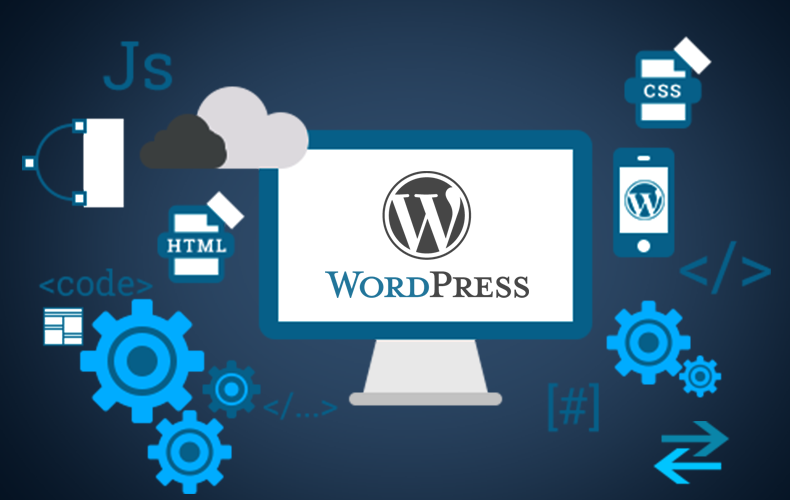A well-designed WordPress website is essential for standing out and converting visitors into loyal customers. As businesses evolve, it's crucial to stay up to date with design trends and best practices. This guide outlines the essential steps to create an impactful website design that aligns with your business goals in November 2024.
Understanding the Essentials of WordPress Website Design
Define Your Website's Goals
Before diving into design specifics, defining the goals of your website is vital. Click here Whether it’s generating leads, selling products, or providing information, understanding your objectives will guide the design process. Consider the needs of your audience and tailor the design to meet those needs effectively.
Know Your Target Audience
Understanding your target audience’s preferences and behavior is key. A well-designed site that speaks directly to the needs of your audience encourages engagement. Conduct market research to identify demographics, pain points, and interests, allowing you to customize content and design elements that resonate with them.
Key Design Principles for Success
Focus on Simplicity and Readability
Simplicity is the foundation of any great website design. Clean layouts with plenty of white space ensure that content is easy to read and digest. Avoid overwhelming visitors with too much information or complex navigation. This not only enhances user experience but also improves overall engagement.
Maintain Consistency Across Pages
Consistency is crucial in website design. Stick to a uniform color palette, typography, and layout throughout the site. This creates a cohesive and professional look that helps visitors navigate your site with ease. Consistency strengthens brand identity, making your business easily recognizable.
Selecting the Right Theme for Your Business
Look for Customization Options
The theme you choose for your WordPress website should offer customization flexibility. Themes with easy-to-use design settings allow you to adjust fonts, colors, and layouts without coding. Click here This flexibility ensures that you can adapt your site as your business grows and design trends change over time.
Evaluate Themes for Speed and SEO
Performance is a critical factor when selecting a theme. Opt for lightweight, SEO-friendly themes that load quickly. Website speed is a ranking factor for Google, and a slow website can negatively affect user experience and conversion rates. Look for themes that offer SEO optimization features to improve your site’s visibility on search engines.
Optimizing for Mobile Responsiveness
Ensure Your Site is Mobile-Friendly
With a significant portion of web traffic coming from mobile devices, a mobile-friendly design is non-negotiable. Your website should automatically adjust to smaller screens, providing a seamless browsing experience on smartphones and tablets. Prioritize mobile responsiveness to reach a wider audience and enhance usability.
Test Responsiveness Across Multiple Devices
To ensure a flawless mobile experience, test your website on different devices and screen sizes. Tools like Google’s Mobile-Friendly Test help evaluate how well your site adapts to various mobile formats. Regular testing allows you to identify and resolve potential issues before launching.
Incorporating Engaging Visuals and Branding Elements
Create a Visual Hierarchy
A visual hierarchy directs the visitor’s attention to the most important content first. Use contrasting colors, larger font sizes, and strategic placement of elements to emphasize key information. This makes your site easier to navigate and helps visitors quickly find what they are looking for.
Use High-Quality, Relevant Imagery
Images play a significant role in creating an impactful website. Choose high-quality, professional images that align with your brand message. Well-chosen visuals can increase user engagement and convey your brand’s values. Click here Avoid generic stock photos, as they may detract from your authenticity.
Enhancing User Experience with Easy Navigation
Design Intuitive Menus
A clear and simple navigation menu is essential for an optimal user experience. Categorize your pages logically and use straightforward labels to guide visitors. Avoid cluttering the menu with too many options. A well-organized menu allows users to find what they need quickly, increasing the chances of them staying longer on your site.
Add a Search Function
For larger websites, a search bar is crucial. This feature helps users find specific content without navigating through multiple pages. A visible and easy-to-use search bar can significantly improve user satisfaction and encourage visitors to explore more of your site.
Utilizing Plugins for Added Functionality
Essential Plugins for Engagement
WordPress plugins add valuable functionality to your website. Integrate social media sharing buttons, contact forms, and customer testimonial features to enhance user engagement. However, be mindful of overloading your site with too many plugins, as this can slow down performance.
Prioritize Security and Backup Plugins
Protect your website from potential security threats by installing reputable security plugins. Regularly back up your site to avoid data loss due to unforeseen issues, such as server failures or hacks. Popular security plugins like Wordfence and UpdraftPlus provide reliable protection and peace of mind.


